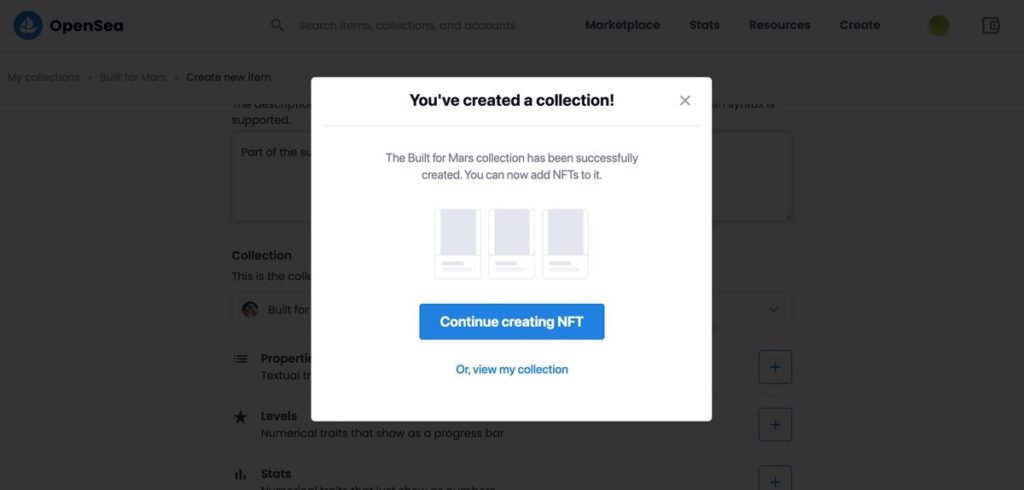Table of Contents
In this article we are going to talk about NFTs (non-fungible tokens) which are unique digital assets, in most cases images, songs or videos that are stored on a public blockchain.
Similar to traditional art, some NFTs are literally worthless, while others are extremely valuable. One of the Beeple’s NFTs sold for more than 69 million USD in February 2021.
So cryptocurrency users have crowded OpenSea which is the biggest NFT platform out there, but does it provide a good user experience? Not really.
We decided to create a NFT collection on OpenSea so we can test it, and it turns out that it could be much better.
Summary
- Why you need to use ‘Actionable routes’
- The trap of sub-tasks
- Don’t forget to auto-save
1. Actionable Routes
This means a preferable next step at any given time. For example after watching an episode of a TV Show on Amazon, one actionable route would be to watch the next episode, another may be to find a different series to watch.
To build a user friendly marketplace you need to only really care about the actionable routes that are common and commonly preferable. i.e., the user may want to re-watch the same movie at 2x speed, but it’s unlikely enough that you wouldn’t priorities it.

For example in the image above, the flow looks really empty, hey could have added actionable routes like:
- Add a new collection
- Learn more about collections
- Do nothing
2. Sub-Tasks
In this case, with OpenSea sub-tasks, users need to do multi-tasking which increases stress and decreases productivity. It’s difficult for OpenSea users to literally do two tasks at once, an example:
- Creating an NFT: The user has a clear task: to create his NFT
- Create a collection: The user has to switch tasks, to creating a collection
- Back to creating the NFT: They need to re-orient their focus back to this.
OpenSea flow should be about bringing the user immediately back to their original task, with a context buffer like this one:

This way the sub-task is completed and the user can get back to creating their NFT.
3. Auto-Saving
This feature is very important and it plays a major factor in the sub-task transition to make sure that user hasn’t lost any work. You don’t want to make your users to simply re-enter information over and over again, it gets boring and frustrating and you may end up loosing customers.
One case is during the collection-creation process, users keep running into this bug where you have to click on the main CTA button few times in order to complete the action.

The thing is that it’s not realistic expectation to avoid every error and to build helpful error message for every potential error, sometimes things just break during the flow.
But, auto-saving can be used like a UX-airbag.
And it would have prevented a lot of users from experiencing a frustration while they try to create their collection on OpenSea. Currently, they have to refresh the collection-creation page and enter everything again in order to complete the process.
Disclaimer: The opinion expressed here is not investment advice – it is provided for informational purposes only. It does not necessarily reflect the opinion of EGG Finance. Every investment and all trading involves risk, so you should always perform your own research prior to making decisions. We do not recommend investing money you cannot afford to lose.
 English
English Français
Français Español
Español Bahasa Indonesia
Bahasa Indonesia 中文 (中国)
中文 (中国) Русский
Русский Português
Português Deutsch
Deutsch

